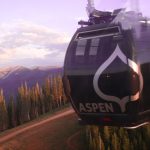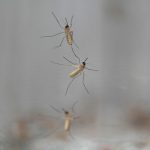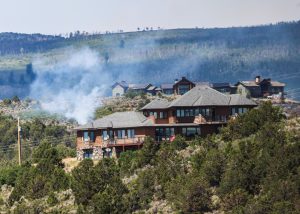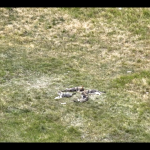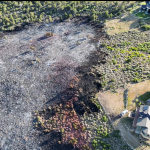Big winter, wet spring leading into drier monsoon season, forecasters suspect

National Weather Service/Courtesy image
The endlessly-wet spring shut off as if a faucet, and summer came right on time with the blue, blue sky this week, the solstice falling on Wednesday. Looks like it might stay that way a while.
Next up is the monsoon season, typically in the form of afternoon-evening rainstorms. Though it can be difficult to predict what the season will look like, this one is shaping up to be average, according to the National Weather Service.
“It can be difficult predicting the strength or intensity of a monsoon, but western Colorado is currently facing an average to low monsoon season this year,” said Megan Stackhouse, a NWS meteorologist at Grand Junction.
While many mistake a monsoon for heavy rain or a big storm, a monsoon is really a seasonal shift in wind pattern that allows for continuous moisture to flow from the Gulf of California into the normally arid Southwest, according to the Colorado State University Climate Center.
The North American monsoon season began on June 15 and will continue through Sept. 30.
“With the monsoon, we typically see a ridge of high pressure build over the Southern Plains, which allows the desert Southwest to see subtropical moisture pulled into the region,” Stackhouse said. “In Colorado, that doesn’t necessarily mean that thunderstorms will suddenly begin developing during the June 15-Sept. 30 period; but rather, this is when to stay alert and aware of monsoon hazards from potential storms.”
In the Roaring Fork Valley, monsoon season can bring thunderstorms, heavy rain, flash flooding, lightning, and debris flows and mud slides.
The above-average snowfall in winter and the wet spring has eased the longstanding drought and some wildfire risk — but not all of it. While monsoons do bring some precipitation, the lightning that comes with it is likely to start plenty of wildfires.
“The majority of wildfires in Colorado are due to natural causes, such as lightning,” Stackhouse said. “Lightning is a common weather threat during the monsoon season, particularly early on in the summer before the bulk of the subtropical moisture arrives.”
The gusty and variable winds that accompany thunderstorms can make wildfires spread rapidly and unpredictably, leading to dangerous situations for wildland managers, firefighters, and the public.
“The monsoon can bring some much-needed precipitation to western Colorado to help put out those fires, but the heavy rain potential leads to increased concerns for post-wildfire flash flooding,” she said.
Last year, NWS recorded 6.87 inches of precipitation during the monsoon season, which Stackhouse said is just slightly above the normal 6.67 inches. For many areas of Colorado, 2022 was a near to slightly above normal monsoon season.
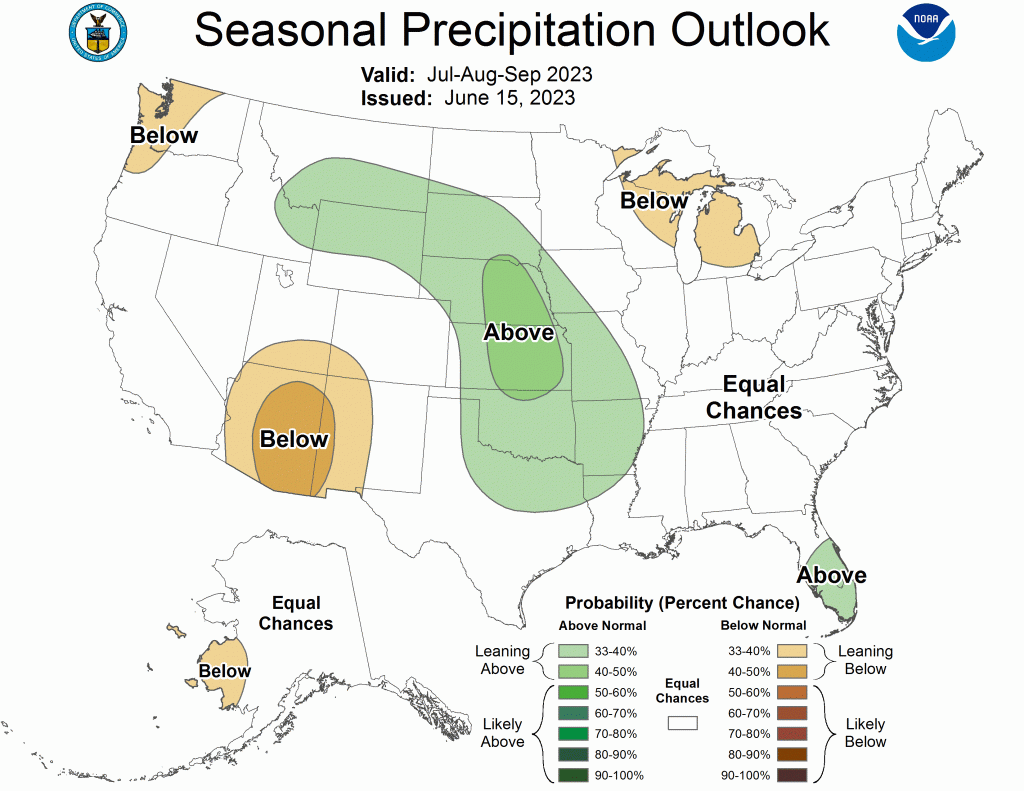
Though there is no definitive relation between winter and the monsoon season, she said, a cooler and more unsettled winter could delay the arrival of the ridge of high pressure over the Southern Plains, thus potentially delaying the start of monsoon season.
How to prepare
Stackhouse said a good way to prepare for monsoon season is to pay attention to weather watches and advisories.
Additionally, property that has excess dry or dead debris from trees or vegetation should be cleared to protect from fire or flooding damage.
NWS has helpful catchphrases to use to stay safe during a thunderstorm. The first phrase, “turn around, don’t drown,” applies to encountering flooding.
The second phrase, “when thunder roars, go indoors,” is a reminder to be cautious of the heavy rain, lightning, and flooding that may come with a thunderstorm.
“Lightning is the most underrated weather hazard,” she said. “Lightning makes every single thunderstorm a potential killer, whether the storm produces one single bolt or 10,000 bolts.”
To find more monsoon season facts and forecasts, go to weather.gov/gjt/monsoon_101#.
To reach Audrey Ryan, email her at aryan@swiftcom.com.
Pitkin County enters Stage 2 Fire Restrictions amid ‘extreme’ conditions
Pitkin County announced a Stage 2 fire ban effective Friday, Aug. 8, following persistent dry conditions, high winds, and low fuel moisture content.
Wildfire in Missouri Heights prompts evacuations, burns 115 acres as of Sunday night
A wildfire broke out Sunday near Missouri Heights that prompted temporary evacuations and burned an estimated 115 acres, although no injuries or major structural damage were reported.

